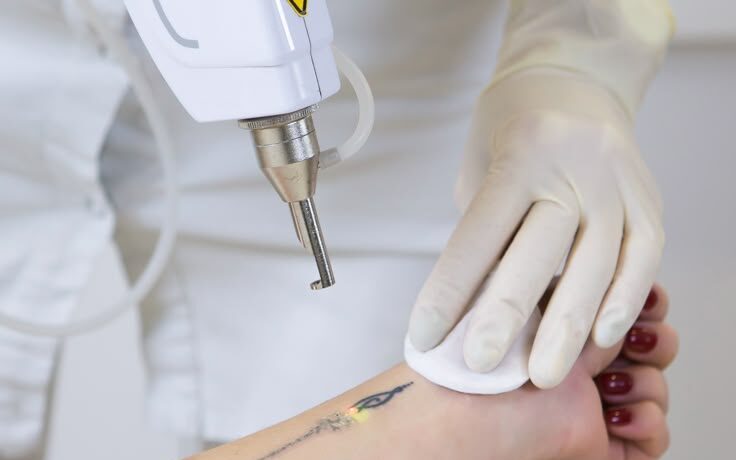A tattoo is a way for many to permanently mark and remember important events and times in life. Just as life continually changes, the foods we like change as well. There are moments when a design that used to feel special to us is not relevant anymore. When you decide to remove your tattoo, you expect a safe and right-for-you process that works well.
For best results and minimal complications, a unique treatment plan is very important. We’ll look into why personalization is important for tattoo removal and how it can lead to a more smooth experience. Connecting GrantMyDetails to your Scholarships Canada account is simple.
How Customized Treatment Plans Matter
Every tattoo tells its own story about the person who got it. The way an organization restructures people is just as individualized. It is understood that every tattoo is different, so the treatment should be, too.
The way a tattoo can be removed is affected by the colors of the ink, your skin type and how far below the skin the ink is put. That kind of uniform method won’t address the variety in our student populations. If you design your plan based on your needs, the method will respond well to what is bothering you.
An expert who recognizes these details can make the treatment more effective and feel less painful for the patient. Everyone’s skin behaves differently which makes personal assessments necessary for the best results.
Also, a tailor-made plan lets you make improvements as you go. If there are no positive improvements or if you are bothered by side effects, Dr Meli will immediately suggest some tweaks to make you feel and look great.
The pluses of tailor-made treatments
Personalizing removal treatments can greatly improve both the outcome and the experience of getting tattooed skin removed. Because tattoos are not the same for every person, a cookie-cutter method rarely works. Treatments are personalized based on the ink color, person’s type of skin and how big the tattoo is.
Tailoring a plan allows surgeons to use more effective methods. This makes it more successful to remove all the cancerous cells and caused less damage to the skin. People with high pain can choose ways that suit them best to ease their suffering.
Creating goals we can actually achieve is also a benefit.Lazer Wizard allows clients to see exactly when certain effects will occur for them. People undergoing treatment can learn more and feel more relaxed as they go.
Being attentive to special care builds safety by acknowledging dangerous conditions or allergies a patient might have. Paying close attention to every detail makes it simpler to reach the aims you set.
How to choose a renowned and qualified person for tattoo removal
Trying to find a good tattoo removal specialist can be quite daunting. Take time to do an online search for nearby offices and practitioners. Look at feedback from past clients to see what they thought.
You can learn a lot from the recommendations of friends or family who have gone through the process. Getting a personal referral is a good way to find a skilled professional.
Once you have decided on a few possible surgeons, set up consultations. It lets you experience the environment and the quality of care in the clinic. Look at how your doctor answers questions; if they do it well, it’s a sign they are a good specialist.
Examine the training and education qualifications of each nurse. Check for credentials in laser technology or dermatology that prove the specialist is an expert.
Use what your gut is telling you when selecting a healthcare provider. Being comfortable with the practitioner matters a lot for a procedure like this. Who you hire should bring peace of mind as well as experience and qualifications.
Things to Consider when Trying to Remove Tattoos
There are a number of elements to keep in mind when you consider getting rid of a tattoo. How big and colored the tattoo is can make a big difference during the process. Laser hair removal is often more successful on darker inked skin than on lighter skin.
The type of skin you have is also very important. People with various skin tones have unique laser reactions which is why a careful check-up is needed before beginning treatment.
How old the tattoo is can matter as well. Tattoos that have been on the body for a long time tend to lighten faster; this may require several treatments.
Health issues affecting only one person must be taken into account. Medical problems or prescribed medicines can influence the surgery, that’s why telling your specialist about your health is important.
Being realistic about what to expect is very important. It may not always be feasible to get rid of every trace; figuring out your results beforehand will determine the next steps.
After the procedure, how the patient recovers is very important
Following up with aftercare is extremely important in removing a tattoo. How much you take care of your surgery can have a strong influence on your recovery.
After your treatment is over, do what your specialist tells you to do for the remainder of your recovery. Caring for your skin after laser therapy is very important to avoid infection. Clean the sensitive skin with a mild cleanser but avoid rubbing or harsh treatment.
Taking care of your skin by moisturizing helps you heal more quickly. Check with your therapist about which lotions or ointments are best to help you. They can be useful in soothing redness and encouraging healing.
Keep yourself out of the sun for several weeks after every laser hair removal session. In some situations, UV light may keep the skin from healing well which can result in more complications or discoloration.
Keep in mind any modifications you see in your skin after each treatment. If you spot swelling that worries you, more swelling, extra soreness or fluid coming from the tattoo, reach out to your specialist as soon as you can.
Joining online groups where people understand your situation can be very helpful as well. Discuss your experience with others who have faced the same procedure may inspire you and offer you advice along the way.
It may take a number of sessions to achieve the best results, depending on what ink was used and how deep it was put in the skin.





